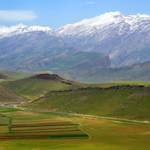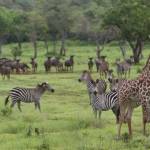Parque Nacional Natural Serranía de Manacacías, protecting link between Llanos and Amazon
2024 CE • Colombia
"The llanos region spans more than 200,000 square miles through Colombia and Venezuela. Hot winds blow over its grassy hills, and scattered forests of Mauritius palms shelter hidden streams and lagoons. For centuries this landscape, shaped by ancient rivers, has been shared by ranchers and cattle, which learned to coexist with jaguars, panthers, anacondas, electric eels and crocodiles. In December, Colombia declared a new national park in a corner of the llanos that borders the Manacacías River . . . At 263 square miles, the new park, Parque Nacional Natural Serranía de Manacacías, is not Colombia’s biggest. But from a conservation perspective it is strategic, protecting a crucial link between this vast tropical savanna and the Amazon, the world’s largest rainforest . . . The sandy, acidic, nutrient-poor soils of the llanos can support . . . commercial crops only when doused with fertilizers and calcium carbonate. But intensive agriculture compromises the water, and the ability to sustain life, in a key transition zone between the llanos and the Amazon. The hope is that by protecting this small puzzle piece of savanna, a whole lot more can be saved."
Jennie Erin Smith, "Where Anteaters and Anacondas Roam, and Ranchers Are Now Rangers," The New York Times, January 16, 2024.
Image: Alliance of Bioversity International and CIAT via Flickr, CC BY-SA 2.0 DEED Attribution-ShareAlike 2.0 Generic


Learn about Maya Lin’s fifth and final memorial: a multi-platform science based artwork that presents an ecological history of our world - past, present, and future.

Discover ecological histories and stories of former abundance, loss, and recovery on the map of memory.

Learn how we can reduce our emissions and protect and restore species and habitats – around the world.

See how art can help us rethink the problems we face, and give us hope that each one of us can make a difference.

Help make a global memorial something personal and close to home. Share your stories of the natural world.


